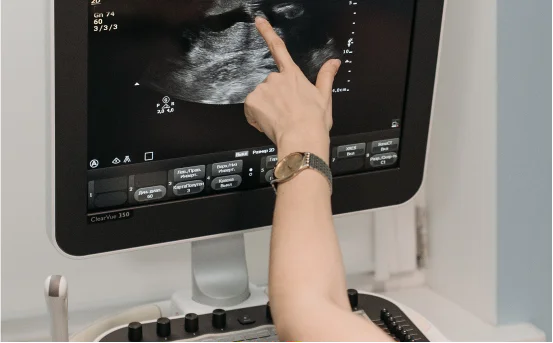Diagnosis of thigh lift surgery also known as thighplasty comes into the picture. This cosmetic procedure is designed to remove excess skin and fat from the thighs, creating a more sculpted, proportionate, and youthful silhouette. It’s particularly beneficial for individuals who have experienced significant weight loss or natural skin laxity due to aging.
As we age, or after significant weight loss, many people struggle with loose, sagging skin on their thighs. While exercise and diet can help tone muscles and reduce fat, they can’t always address excess skin. This is where thigh lift surgery medically known as thighplasty can play a transformative role.
What Is Thigh Lift Surgery?
A thigh lift is a cosmetic surgical procedure designed to remove excess skin and fat from the thighs, resulting in a smoother, firmer, and more youthful appearance. It is especially popular among individuals who have undergone massive weight loss or are experiencing natural aging-related skin laxity.
There are different types of thigh lift procedures :-
-
Inner (medial) thigh lift :- focuses on the inner thigh.
-
Outer thigh lift :- targets the outer part of the thighs.
-
Vertical thigh lift :- addresses larger areas of excess skin down the inner thigh.
-
Mini thigh lift :- involves minor correction for patients with minimal sagging.
But how does one determine whether they are a suitable candidate? That’s where diagnosis and evaluation come in.
Why Diagnosis Is Crucial Before Thigh Lift Surgery
Many people think cosmetic surgeries are purely elective, but a proper diagnostic process ensures that :-
-
The patient is a safe candidate for surgery.
-
The expectations are realistic.
-
Underlying health conditions are identified and managed.
-
The surgeon can recommend the most appropriate technique.
Diagnosis is not just a single test it’s a holistic evaluation that involves physical examination, medical history review, and sometimes laboratory tests.
Key Factors in Diagnosis of Thigh Lift Surgery
Physical Examination of the Thigh Area
The surgeon performs a detailed physical examination of the thigh region to assess :-
-
Skin elasticity and degree of sagging
-
Localized fat deposits
-
Presence of stretch marks or cellulite
-
Muscle tone and underlying structures
This exam helps determine the extent of excess tissue and whether it’s concentrated on the inner thigh, outer thigh, or both.
Medical History Review
Your medical history plays a vital role in the diagnosis. Surgeons need to know about :-
-
Any chronic conditions such as diabetes, hypertension, or cardiovascular issues
-
Previous surgeries or skin infections
-
Medications or supplements currently being taken
-
History of smoking, which can impair healing
This ensures patient safety and helps reduce the risk of postoperative complications.
Body Mass Index (BMI) and Weight Stability
Although a thigh lift can involve some fat removal, it is not a weight loss surgery. Therefore, most surgeons recommend :-
-
A BMI under 30 for optimal surgical outcomes
-
Stable weight for at least 6–12 months
-
No recent or planned major weight changes (e.g., bariatric surgery)
If a patient is still losing weight, the procedure may be postponed until the goal weight is achieved and maintained.
Skin Elasticity and Laxity
The primary indication for a thigh lift is excess, loose, or sagging skin. This may result from :-
-
Massive weight loss after bariatric surgery
-
Natural aging processes
-
Pregnancy-related body changes
Good skin elasticity helps improve recovery and final results. Surgeons will assess whether the skin can snap back after minor reshaping, or whether it requires surgical removal.
Psychological Readiness and Realistic Expectations
A psychological assessment is part of the diagnosis process. Patients should :-
-
Be emotionally stable
-
Have realistic goals for the procedure
-
Understand the benefits and limitations
-
Be prepared for scars, recovery time, and lifestyle adjustments
Those seeking perfection or influenced by external pressures (like a partner or social media) may be advised to reconsider.
Who Is an Ideal Candidate for Thigh Lift Surgery?
Based on the diagnostic findings, an ideal candidate typically meets the following criteria :-
-
Has significant loose skin on the thighs
-
Maintains a stable weight
-
Is in good overall health
-
Does not smoke or is willing to quit
-
Understands the risks and benefits of the procedure
-
Has positive motivations and realistic expectations
If a patient has too much fat and minimal loose skin, liposuction may be recommended instead of a thigh lift—or in combination with it.
Diagnostic Tests Before Surgery
Though not always necessary, some patients may undergo tests before thigh lift surgery, including :-
-
Blood tests (CBC, blood sugar, coagulation profile)
-
Urinalysis
-
ECG (Electrocardiogram) for heart health
-
Imaging scans in rare cases to rule out underlying tissue conditions
These tests help ensure the patient is medically fit for anesthesia and surgery.
When a Thigh Lift Is Medically Recommended?
While typically considered cosmetic, thigh lifts may be medically indicated when :-
- Excess skin causes frequent rashes or infections
- There is chafing or skin breakdown in the thigh area
- It interferes with mobility or daily activities
- The sagging skin affects mental health or body image severely
In some cases, insurance companies may cover thigh lift surgery if it’s deemed medically necessary and properly documented.
Post-Diagnosis: Treatment Planning
Once the diagnosis confirms that a patient is a good candidate, the surgeon will :-
-
Choose the right technique based on the patient’s anatomy and goals
-
Discuss scar locations and healing expectations
-
Provide preoperative instructions
-
Plan for anesthesia, recovery, and downtime
This customized approach ensures optimal results and patient satisfaction.
Preparing for Thigh Lift Surgery
After a confirmed diagnosis, patients should :-
-
Stop smoking at least 4 weeks before and after surgery
-
Avoid blood-thinning medications (aspirin, NSAIDs, etc.)
-
Stay hydrated and eat a balanced diet
-
Arrange for help during the first few days of recovery
These preoperative steps are critical for minimizing risks and speeding up the healing process.
Conclusion
A thigh lift can significantly improve the appearance, comfort, and confidence of those struggling with loose skin in the thigh area. However, the diagnosis process is key it ensures that surgery is both safe and effective.























